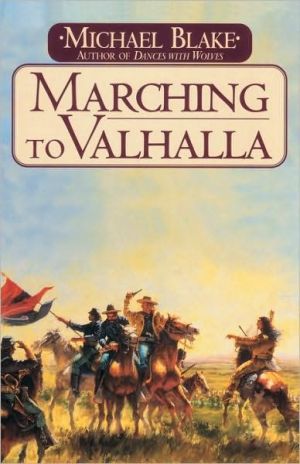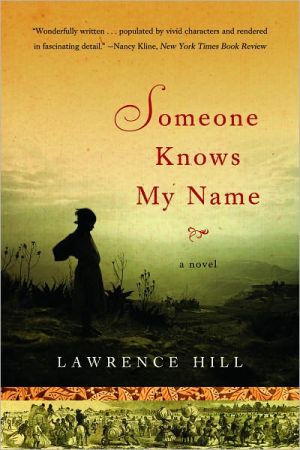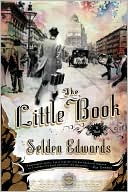Marching to Valhalla: A Novel of Custer's Last Days
"A TERRIFIC YARN . . . Marching to Valhalla is written as though it were a long-lost diary of Custer's, leading up to his fatal battle. It is a very personal view."\ —Denver Post\ In his New York Times bestselling novel Dances with Wolves, Michael Blake created an unforgettable saga of white and Native American cultures. Now in Marching to Valhalla, Blake unfolds the story of the final months of General George Armstrong Custer, a story that illuminates the epic sweep of his entire life—his...
Search in google:
"A TERRIFIC YARN . . . Marching to Valhalla is written as though it were a long-lost diary of Custer's, leading up to his fatal battle. It is a very personal view."—Denver PostIn his New York Times bestselling novel Dances with Wolves, Michael Blake created an unforgettable saga of white and Native American cultures. Now in Marching to Valhalla, Blake unfolds the story of the final months of General George Armstrong Custer, a story that illuminates the epic sweep of his entire life—his career, his passions, his legacy to the American west.Here is Custer as we've never seen him before—reckless soldier, bold lover of women, ardent husband, devoted commander, expert Indian killer. A stirring tribute to an American hero and an intimate portrait of a brilliant, flawed man, Michael Blake's Marching to Valhalla is an absolutely stunning novel."A startling novel about the year's most popular literary subject."—Publishers Weekly (starred review)Publishers WeeklyThe author of Dances with Wolves returns to the Old West for a startling novel about this year's most popular literary subject, the inimitable George Armstrong Custer, focus to date of at least four novels and three nonfiction books. Every author has his own Custer, and Blake's is wholly unexpected: not a glory-hungry martinet but a rational man and passionate romantic. Blake's approach is refreshing. He presents Custer by imagining the general's journals, written during the last seven weeks of his life, from May 18, 1876 to the morning of June 25, 1876, date of the Battle of the Little Bighorn. As he pursues the Sioux, Custer reveals his private thoughts about the military, his Indian opponents, his plans for the upcoming battle and his destiny. He also ventures at length into his past, making it clear that, although "I have always aspired to greatness," it was his remarkable battlefield achievements in the Civil War, as well as his ardent love for his wife, Libbie, that proved key to his later military successes and his popularity with the public. He also coolly explains his court martial conviction and his sordid affair with a young Indian woman. Though revisionist in its sympathy for Custer, the narrative seems rigorously authentic in its period detail, down to the flowery nature of Custer's prose. Blake's fascinating tale may not convince readers that its hero was a paragon of humanity, but it likely will persuade many that, for all his faults, Custer was a warrior who died with his boots on. 100,000 first printing; major ad/promo; film rights sold to New Line Cinema with Brad Pitt scheduled to play Custer; simultaneous Random House audio; author tour; foreign rights sold in Japan, Germany and England. (Oct.)
\ Publishers Weekly - Publisher's Weekly\ The author of Dances with Wolves returns to the Old West for a startling novel about this year's most popular literary subject, the inimitable George Armstrong Custer, focus to date of at least four novels and three nonfiction books. Every author has his own Custer, and Blake's is wholly unexpected: not a glory-hungry martinet but a rational man and passionate romantic. Blake's approach is refreshing. He presents Custer by imagining the general's journals, written during the last seven weeks of his life, from May 18, 1876 to the morning of June 25, 1876, date of the Battle of the Little Bighorn. As he pursues the Sioux, Custer reveals his private thoughts about the military, his Indian opponents, his plans for the upcoming battle and his destiny. He also ventures at length into his past, making it clear that, although "I have always aspired to greatness," it was his remarkable battlefield achievements in the Civil War, as well as his ardent love for his wife, Libbie, that proved key to his later military successes and his popularity with the public. He also coolly explains his court martial conviction and his sordid affair with a young Indian woman. Though revisionist in its sympathy for Custer, the narrative seems rigorously authentic in its period detail, down to the flowery nature of Custer's prose. Blake's fascinating tale may not convince readers that its hero was a paragon of humanity, but it likely will persuade many that, for all his faults, Custer was a warrior who died with his boots on. 100,000 first printing; major ad/promo; film rights sold to New Line Cinema with Brad Pitt scheduled to play Custer; simultaneous Random House audio; author tour; foreign rights sold in Japan, Germany and England. (Oct.)\ \ \ \ \ Library JournalMarching to Valhalla tells of the life of George Armstrong Custer. Written in the style of a fictional personal journal, this shows the two sides of Custer: the private life he shared with family and the public life for which he was destined. The journal entries begin with Custer's graduation from West Point (at the bottom of a class of 40) and go on to tell of his field promotion to Brigadier General at 23, the youngest serving general in the Union Army. The last journal entry describes the fateful march of the 7th Cavalry into the valley of the Little Big Horn on the 25th of June 1876. Author Blake (Dances with Wolves, Audio Reviews, LJ 1/91) narrates his book well, portraying Custer as a very human man, caught up by the politics of his era and driven by his will to lead. This is a very moving story and is essential for all public libraries.-Theresa Connors, Arkansas Tech Univ., Russellville\ \ \ Kirkus ReviewsA dazzling depiction of George Armstrong Custer on the way to his rendezvous with death at the Little Bighorn, from the author of Dances with Wolves (not reviewed).\ The resonant narrative is cast in the form of a first-person journal kept by the martial wunderkind during the period from May 18 through the morning of June 25, 1876. Ordered by the War Department to lead a force of mounted troops against Sioux and other tribes resisting settlement on government reservations, Lieutenant Colonel Custer reflects on the almost constant conflicts of a checkered past and on his uncertain future. While pondering the campaign on which he's embarked, Custer recalls the glory of his Civil War service, the bitterness of occupation duty in a conquered South, and the cutbacks in America's military that reduced him in rank from a brevet major general to captain. The seasoned field commander remembers his comeback (when the Seventh Cavalry Regiment was organized) and the subsequent disgrace of a one-year suspension from the Army (for being absent without leave). The deterministic Custer reminisces as well about his instant redemption as victor over a large band of Cheyenne in a bloody midwinter engagement on the banks of the Washita River. He goes on to review his running battles with corrupt federal agencies and exasperation with elected officials who continuously changed national policy on Plains Indians. An affecting love story also runs through the uxorious warrior's autobiographical musings, one that details the abiding spiritual devotion he and his wife Libbie have for each other. Custer cherishes honor and glory at least as much as love, however, and at the close he marches out to embrace his as yet unknown fate on a summer's morn in the wilds of Montana.\ A tour de force that sympathetically brings one of American history's more intriguing heroes vividly to life on the eve of his destruction.\ \ \








